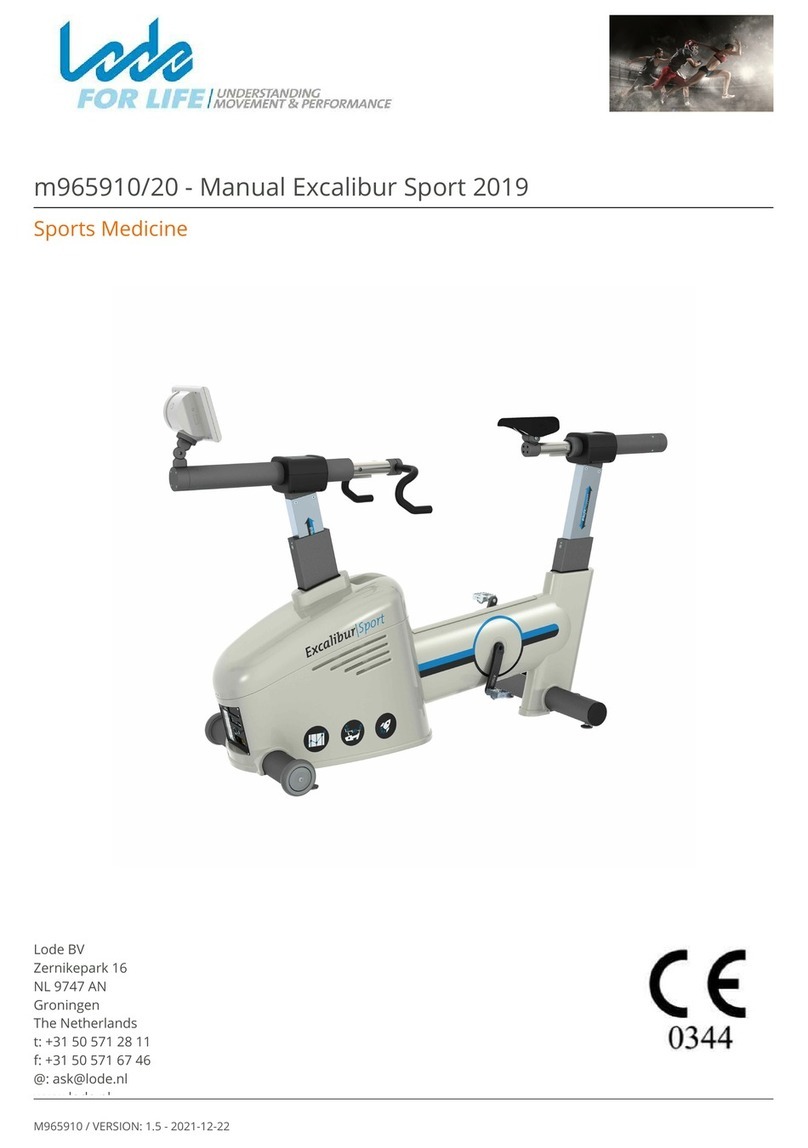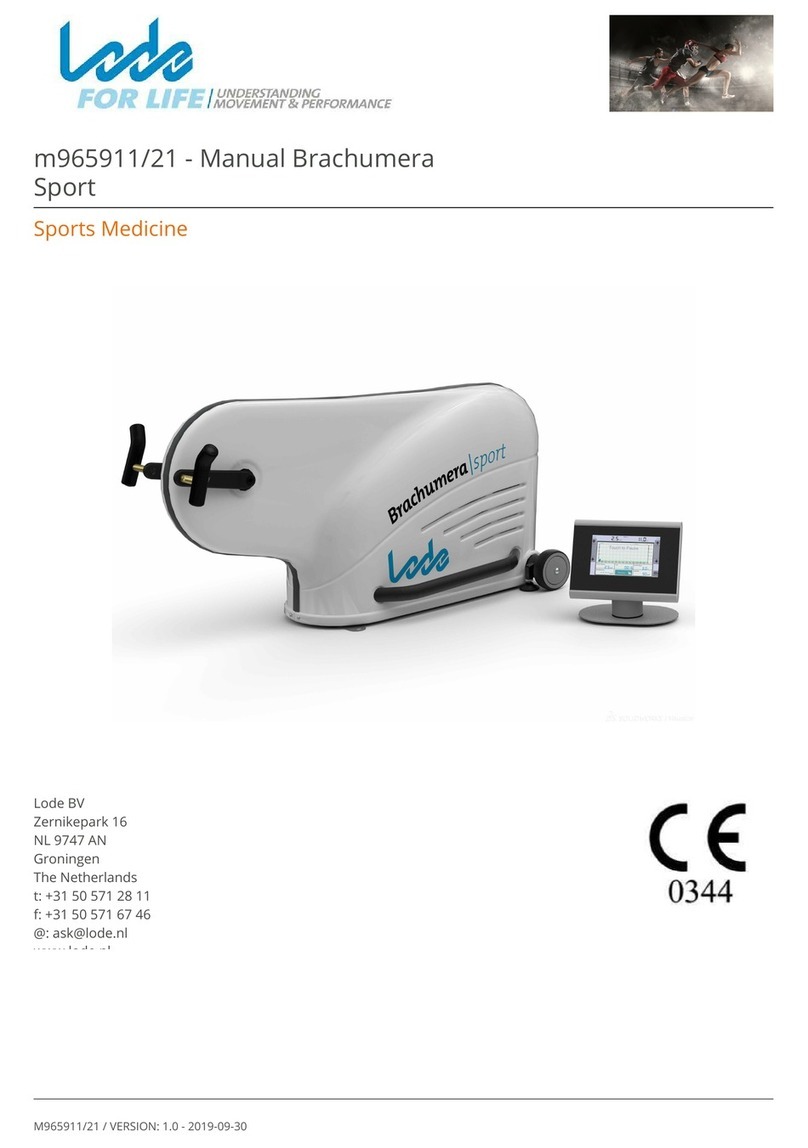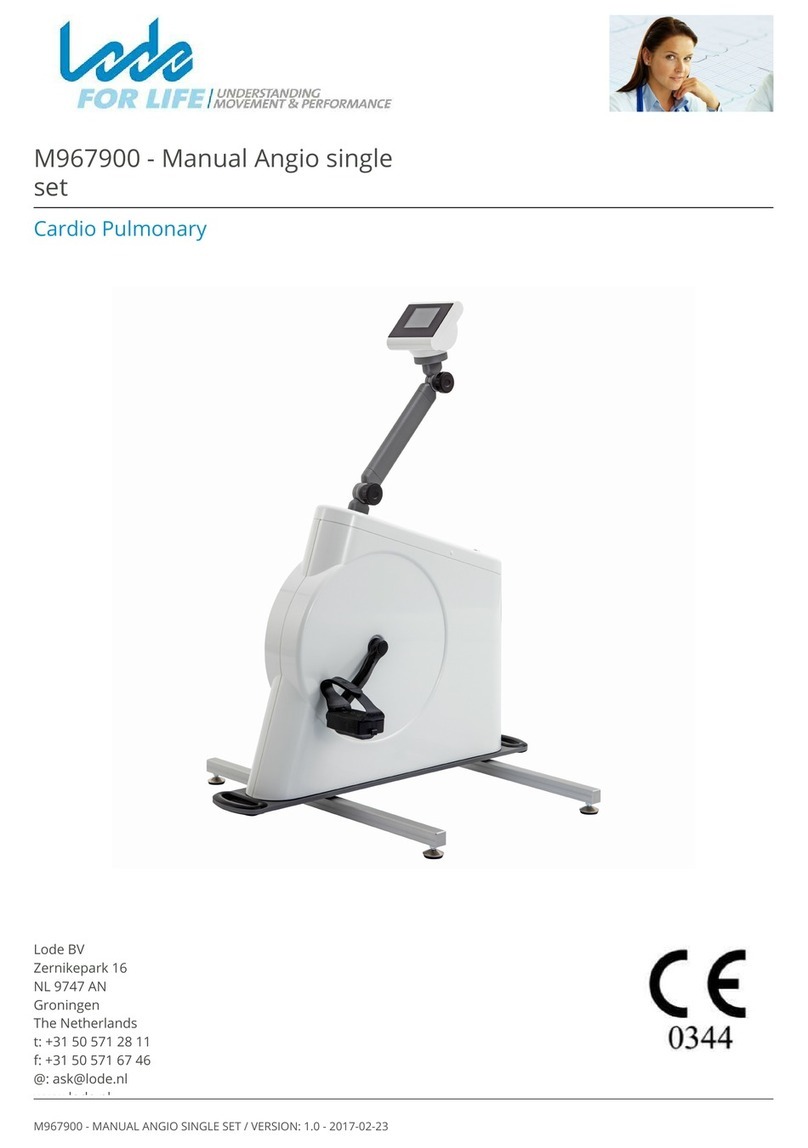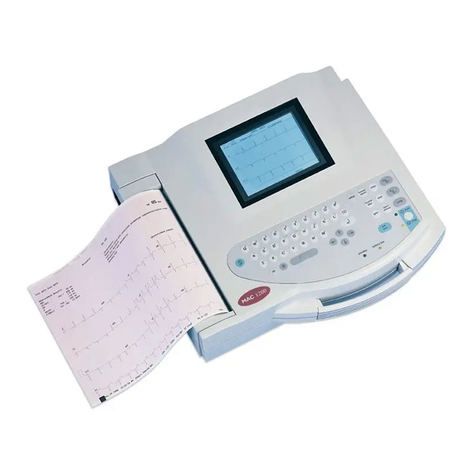1 - Intended Use
A Lode Body Weight Support System (BWSS) is a rehabilitation or training device intended to be used as
a device to reduce the body weight acting on a test persons lower limbs in a medical environment. The
force to reduce the body weight will be transferred through a harness, worn by the test person, to the
Body Weight Support System. The parameter “supported body weight” can be measured (kg).
In combination with other (medical) devices, like a treadmill, the BWSS forms a dedicated rehabilitation
or training device for people unable to bear their full bodyweight on the lower limbs.
The BWSS has to be operated under the supervision of well-trained rehabilitation specialists or
physiotherapists. The ultimate judgment whether a test person is capable of using the BWSS must be
made by the responsible specialist, based on the limitations of each individual, the medical history and
all other applicable circumstances. Neither Lode BV nor its distributors can be held responsible for the
final use of its equipment.
2 - Contra Indication
The BWSS is to be operated by classified personnel only. As stated in the intended use, the BWSS is
intended to be used in a medical environment.
3 - Maintenance
The BWSS should be calibrated once a year. In case any damage is observed of the BWSS Lode B.V. or
his representative should be informed in order to execute the necessary repair(s). Service of the BWSS
is restricted to factory-trained personnel only.

































